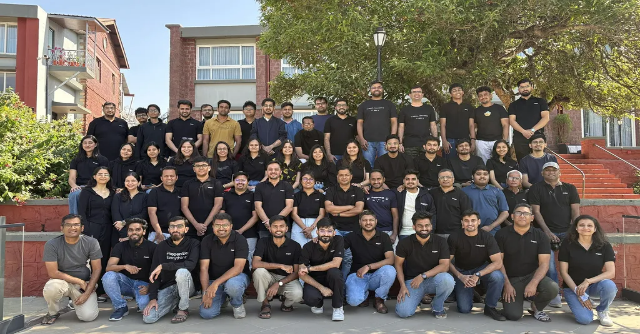
How this Mumbai-based Open-Source SaaS startup is taking on legacy players


Mumbai-based open-source software startup, Frappe.io, is witnessing growing interest in its enterprise resource planning (ERP) platform as global enterprises prepare for a major shift mandated by SAP.
SAP has announced that it will end support for its ERP Central Component (ECC) software by 2027, urging customers to migrate to SAP S/4HANA, its next-generation ERP suite. The move is crucial for maintaining security updates and official support. However, the transition has proven challenging. According to Gartner, only 39% of SAP customers have migrated so far, with many citing the complexity and high costs of the process.
Amid this uncertainty, Frappe’s ERPNext, a free and open-source ERP platform, is emerging as an attractive alternative. The software provides integrated tools for finance, sales, manufacturing, human resources, and other functions.
“Several large banks and enterprises that currently employ hundreds of SAP-certified professionals have started building small internal ERPNext teams,” said Neha Sankhe, Chief Operating Officer at Frappe. “They see the future shifting this way. ERP transitions don’t happen overnight. It is a two- to three-year journey to even plan and visualise. But it is happening.”
The origins of Frappe date back to 2006, when its founder, Rushabh Mehta, a hobbyist Python programmer, built an ERP system for his family’s healthcare manufacturing business after finding legacy software too limiting. Inspired by open-source technologies, he made the software open source and later founded Web Notes, which was rebranded as Frappe in 2014.
From SMB to enterprise-grade ERP
ERPNext started out as a product for small businesses but has since evolved into an enterprise-grade platform used by large companies as well. What makes it stand out from licensed software is that there are no per-user, per-month licensing fees, and the application itself is free to use, claims Sankhe. Many users self-host ERPNext without a commercial relationship with Frappe, allowing the platform to scale with their business at minimal cost.
It is built on Frappe Framework, the company’s own low-code/no-code platform. This makes ERPNext modular and customisable, allowing companies to build and adapt the software to their needs.
In 2019, the company decided to unbundle the ERPNext suite to offer standalone solutions. It now offers separate functionalities such as HR and payroll, learning management system, business intelligence tool, help desk, and a dedicated customer relationship management app. “All these products are built on the same Frappe Framework, giving businesses flexibility and cost efficiency without vendor lock-in,” said Sankhe.
In 2020, the company launched a managed hosting platform called Frappe Cloud, based on AWS. “It provides one-click installations and upgrades, automated backups and restores, and overall DevOps management, addressing issues like data loss and reliability that self-hosted users often face,” Sankhe explained.
Monetising open source
For Frappe, around 40% of revenue comes from India, 25% from the Middle East, and roughly 11% each from the Americas and Africa, with the remaining from Europe and other APAC regions. Some of Frappe’s customers include Kalinga International Coal Terminal, Zerodha, Walnut Schools, ISKCON Pune, HEC Enviro India, and Newmatik.
“As for the revenue model, it has evolved from services and a per-user SaaS model to primarily two streams,” said Sankhe. Frappe Cloud accounts for 65% of the company’s revenue, while large enterprises and government clients pay for supported open-source applications, warranties, and customer success services.
Notably, Zerodha, through its fund, Rainmatter, invested ₹10 crore. “Since becoming profitable last year, the company reported nearly 20% net profit on a $4 million revenue base. Even prior to that, the business had been generating revenue and sustaining growth,” she added.
Currently, the company has 80 full time employees, half of whom are engineering and technical staffers. Frappe also has 20,000 active community members on its portal, which contributes to both support and knowledge sharing.
Challenges ahead

Along the way, Frappe has traversed through many, many roadblocks, most perception challenges, as Sankhe puts it. “Perception was particularly common among enterprise decision-makers, who tended to be risk-averse and preferred established vendors like SAP or Salesforce. That said, the early adoption of Frappe came mainly from developer-led, new-age tech companies, where CTOs and engineering teams drove decisions and were more willing to take calculated risks.”
Support is another common concern. Many enterprises worry whether they will receive reliable assistance for business-critical applications.
She observed that skepticism often stemmed from a lack of awareness and explained that open-source software was often more secure and transparent, with code publicly visible and scrutinized by thousands of developers. Sankhe cited Linux and WordPress as examples of open-source solutions that had scaled securely and reliably.

